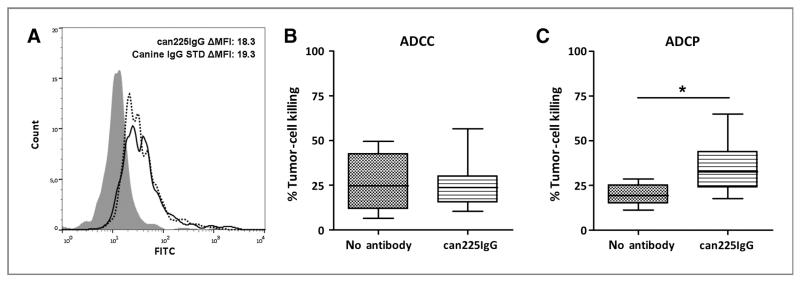Figure 6.
Binding of can225IgG to canine monocytes and assessment of immune cell–mediated cancer cell death. A, evaluation of can225IgG binding to Fcγ receptors on monocytic cells purified from dog patients with cancer. Monocytes (gated as CD14 PE–positive) were stained with anti-dog IgG FITC (gray histogram). Can225IgG (dotted line) as well as canine IgG STD (black line, serving as positive control) are able to bind specifically; ΔMFI for can225IgG = 18.3; ΔMFI for canine IgG STD = 19.3 (n = 3, one representative example depicted). B, measurement of ADCC of P114 cells mediated by can225IgG. PBMCs were purified from dog patients with cancer (n = 3) and incubated with P114 cells for 2.5 hours in the presence or absence of can225IgG, which led to no significant change of cytotoxicity levels. C, measurement of ADCP of P114 cells mediated by can225IgG. PBMCs were purified from dog patients with cancer (n = 3) and incubated with P114 cells for 2.5 hours in the presence or absence of can225IgG, which led to a significant increase in phagocytosis of cancer cells (P = 0.0153).

